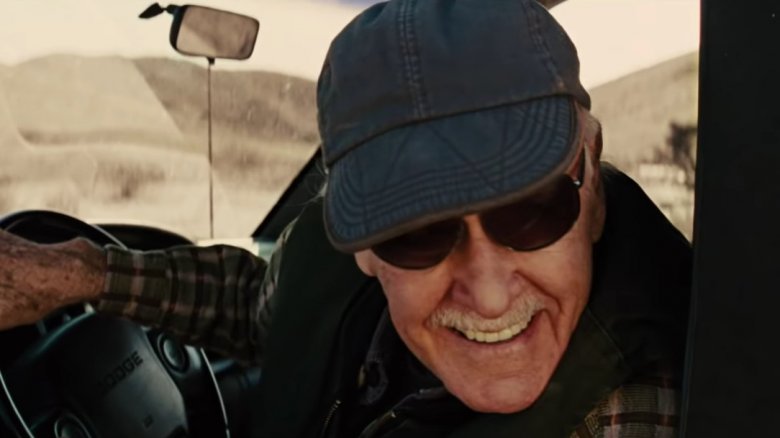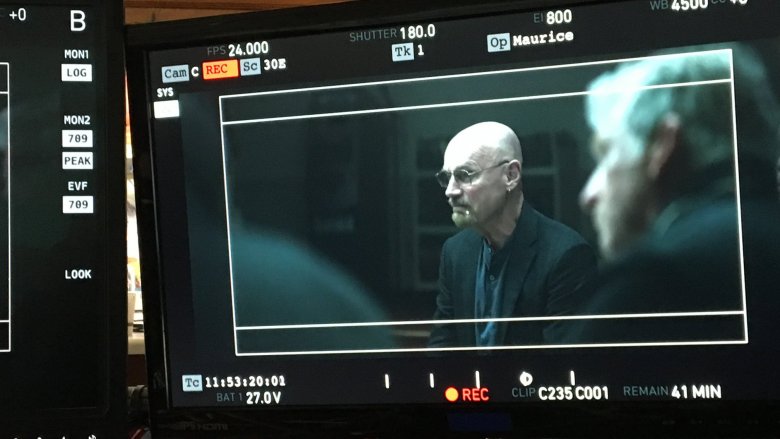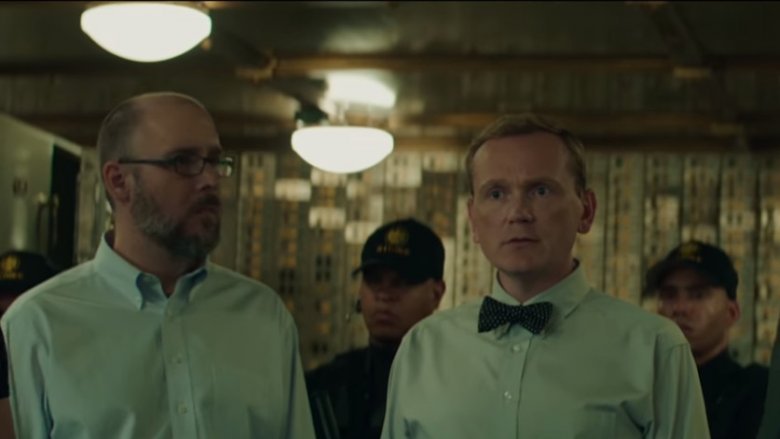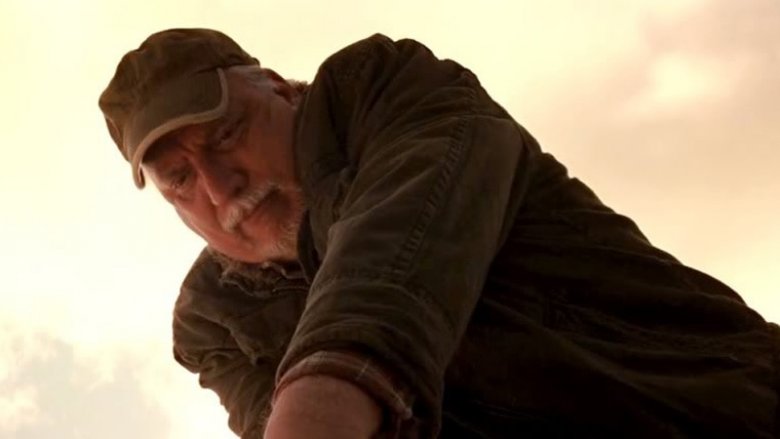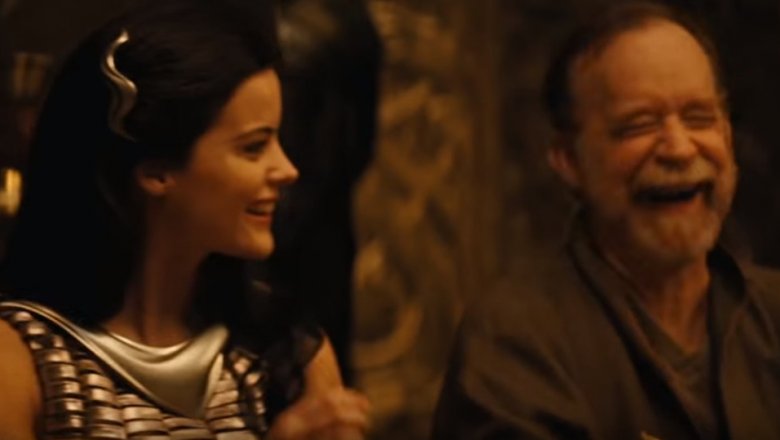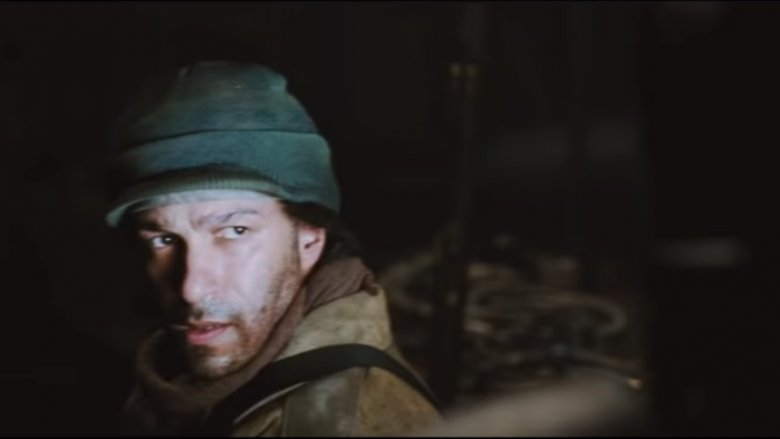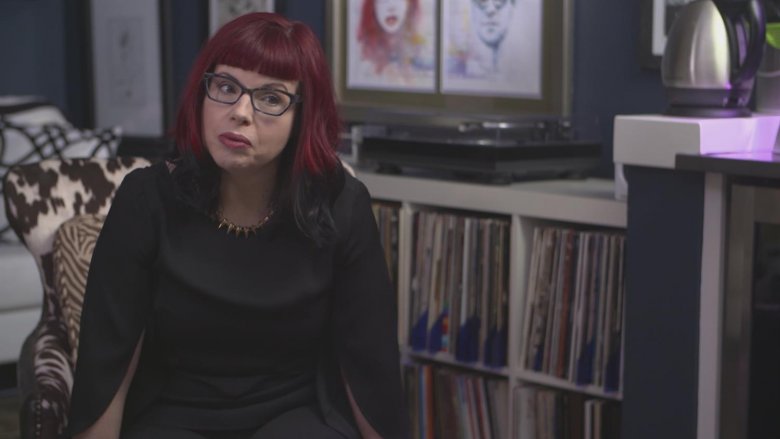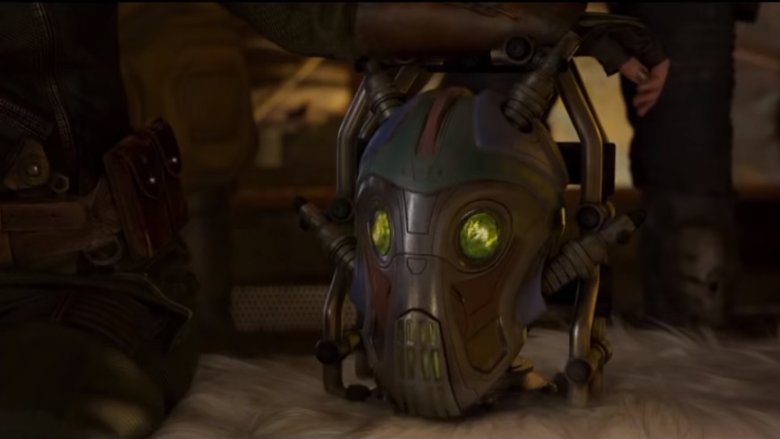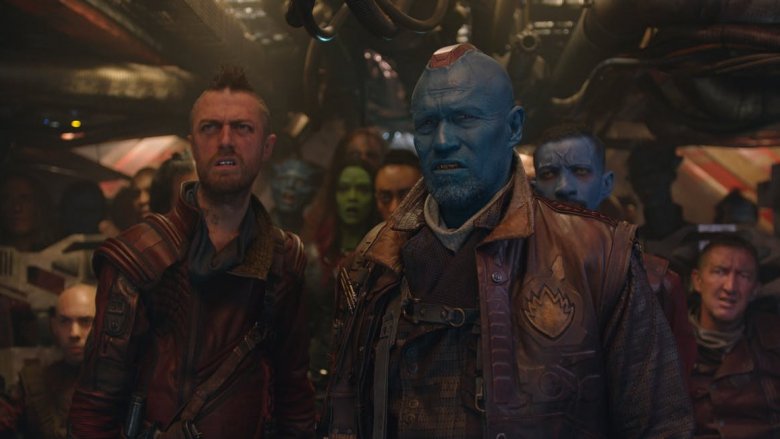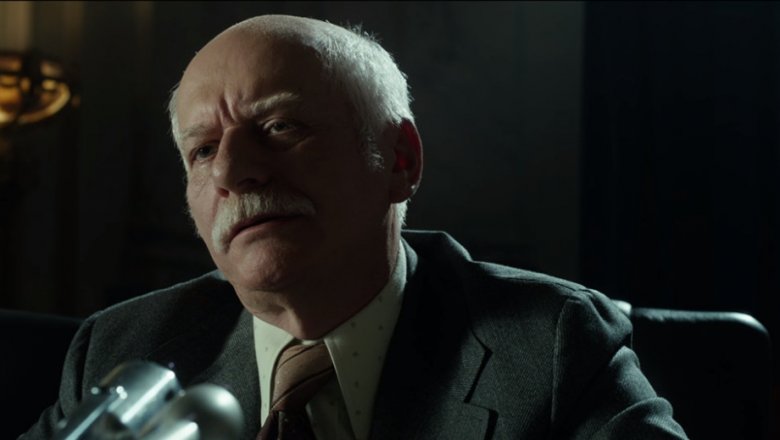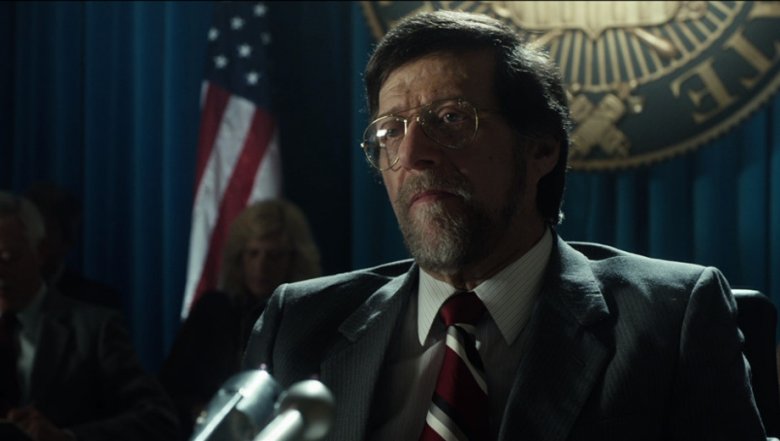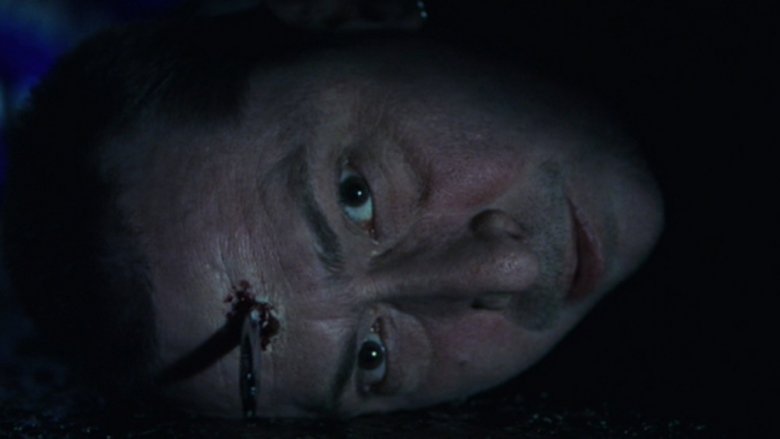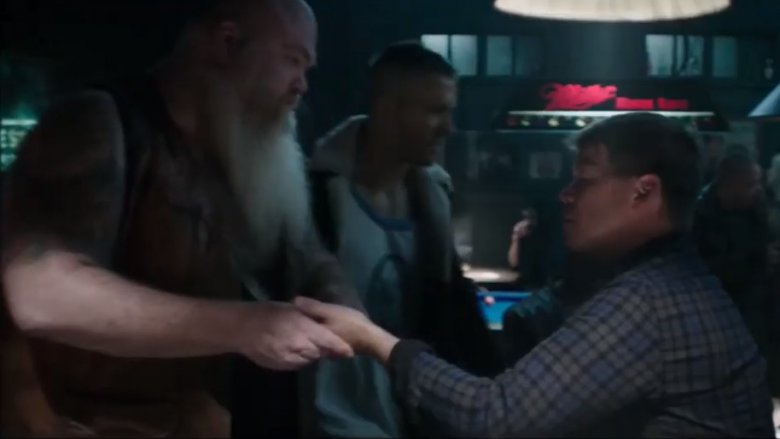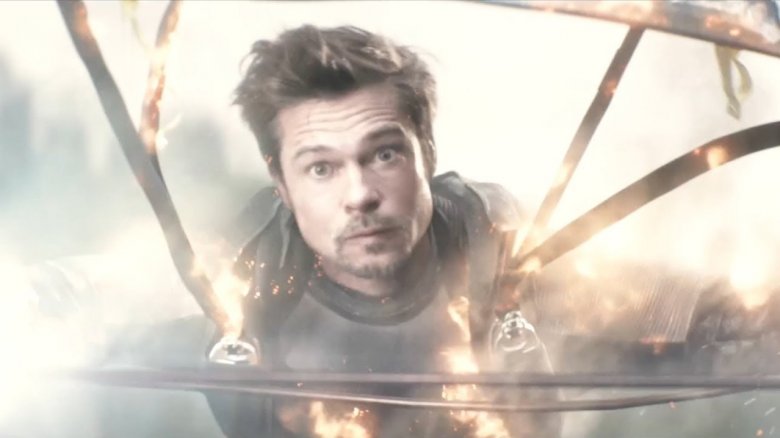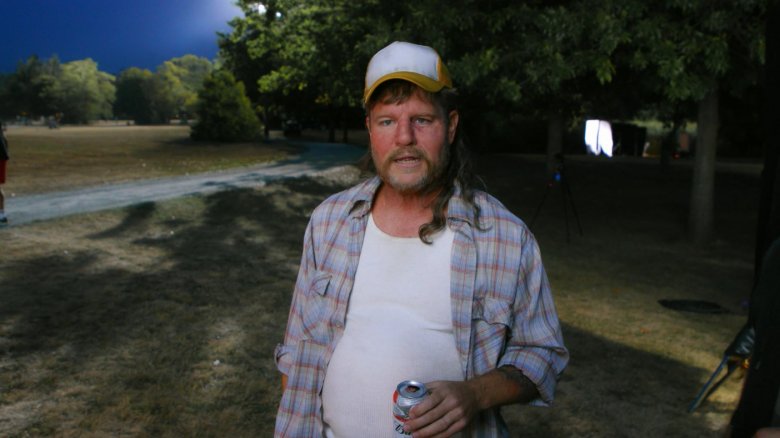Marvel Movie Cameos You Probably Missed
Over the past two decades, dozens of films have been made about the characters and world of Marvel Comics, from an entire franchise devoted to the X-Men to two different Spider-Man reboots to the decade-long behemoth we call the Marvel Cinematic Universe. Thousands of people have appeared in those films, from massive stars to minor extras, and those people have often included noteworthy figures making cameo appearances to give fans a little something extra for the price of their movie ticket.
Of those cameo stars, Stan Lee is without question the best known, having appeared in every MCU film so far and numerous other Marvel productions, but Lee is far from the only person to make a Marvel cameo. In fact, many of the most interesting cameos in Marvel movies come from people you know but might not recognize in the moment, or from people casual moviegoers have perhaps never heard of, but who nonetheless made major contributions to Marvel Comics over the years. In that spirit, we've gathered some of the best Marvel movie cameos that you might have missed.
Jim Starlin in Avengers: Endgame
Avengers: Endgame is a massive film packed with details everywhere you look, but some of its most exciting tidbits and Easter eggs arrive not with the big action spectacles, but with the quiet moments. Early in the film, Captain America is in New York City, attending a support group for people still struggling to find a way to move on after Thanos wiped out half of all life. The scene mostly revolves around a man (played by Endgame co-director Joe Russo) explaining a recent date he had, but if you look at the other people sitting in that circle, you'll notice a bald man with a goatee.
That's Jim Starlin, an extremely influential comic book writer and artist who's best known as the creator of Thanos (as well as Drax and Gamora, among many others) and the author of the most important Thanos story, The Infinity Gauntlet, the tale in which Thanos first snaps his fingers to wipe out half of everyone. So, Thanos' snap did not erase the man who dreamed him into existence.
Ed Brubaker in Captain America: The Winter Soldier
For a very long time in the world of comic books, James Buchanan "Bucky" Barnes was a character you could count on to stay dead, alongside the likes of Jason Todd (who has also since been resurrected) and Peter Parker's Uncle Ben. He was Captain America's World War II pal, but Cap had to move on without him as he tried to exist in a new era. Then, in 2005, Bucky returned as the Winter Soldier, a Soviet assassin with a metal arm. The storyline became one of the most popular and acclaimed Marvel Comics runs of the 2000s, and ultimately made the leap to the big screen in the Marvel Cinematic Universe.
These days, Bucky Barnes is one of the MCU fandom's favorite characters, so it's only fitting that at least one of his creators should get a little nod on the big screen. In Captain America: The Winter Soldier, during one of the scenes in the Hydra lab, you'll see writer Ed Brubaker (above left), who co-created the Winter Soldier with artist Steve Epting, helping to work on Bucky as Alexander Pierce (Robert Redford) interrogates him.
J. Michael Straczynski in Thor
Marvel Studios' first Thor film was teased at the end of Iron Man 2 with a post-credits sequence that featured Agent Phil Coulson finding the God of Thunder's hammer embedded in a crater in the New Mexico desert. That crater creates an interesting bit of chaos in Thor before S.H.I.E.L.D. manages to quarantine it, as the locals find the hammer and start taking turns trying to pull it out of the ground. This, of course, culminates in the moment when a man (Stan Lee himself) tries to yank the thing loose with a truck. It doesn't work.
Before Lee's truck antics, though, another key Thor writer attempts to pry the hammer out of the ground: J. Michael Straczynski, author of an acclaimed and influential run on the main Thor title in the late 2000s (and creator of Babylon 5, among other things), making him one of the biggest names associated with the character around the time the film was made.
Walt Simonson in Thor
Straczynski isn't the only major Thor writer to make a cameo in the MCU. Later in the first Thor film, after the battle on Midgard is won, Lady Sif and the Warriors Three are celebrating their victory with a feast in the halls of Asgard. As Volstagg tells an amusing story about their exploits, the camera cuts to Lady Sif and an unnamed Asgardian man as they laugh in response. That man is Walt Simonson, and if anyone has the right to be hanging out in Asgard with the Warriors Three, it's him.
Simonson is perhaps the most influential and acclaimed Thor writer/artist of all time, thanks to an epic run on Thor from 1983 to 1987, which introduced many of the character's most popular supporting characters and storylines, including Beta Ray Bill and that time Thor got turned into a frog. His fingerprints are all over the various Thor films, and his impact is still felt in Thor comics today.
Tom Morello in Iron Man
Some Marvel movie cameos happen because the person making the cameo is a recognizable movie star who might get the crowd excited. Others serve as tributes to comic book creators without whom the characters and storylines featured in the films would not exist. Then there are those cameos that make you look twice because you're not sure if you saw the seemingly random celebrity or just someone who kinda looks like them.
That's the case with one particular cameo in the MCU movie that started it all, Iron Man. As Tony Stark fires up his first ever Iron Man armor to stage his escape from the cave where he's been kept prisoner, his arc reactor shines onto the face of a seemingly random terrorist, who is then quickly swatted away. That early victim of Iron Man was Rage Against the Machine and Audioslave guitarist Tom Morello, who later confirmed his involvement on social media.
Kelly Sue DeConnick in Captain Marvel
Just a few years ago, the character of Carol Danvers was not known as Captain Marvel. She was Ms. Marvel, and while she was a favorite among many Marvel Comics readers, she wasn't necessarily an A-list superhero. That began to change in 2012, when the character's superhero identity was changed to Captain Marvel, a title that had bounced around to various other characters in the Marvel Universe for decades. Carol's upgrade was overseen by writer Kelly Sue DeConnick, who in addition to crafting an engaging and personal story for the character, was also heavily involved in fandom, helping to spawn the fan collective known as the Carol Corps.
Without this reinvention and DeConnick's passion for the character, we would not have gotten 2019's Captain Marvel film, so it was fitting that she got to make an appearance in the movie alongside the character she transformed. Her cameo is brief, but if you're familiar with Kelly Sue DeConnick, you can't miss her. During the scene in which Carol is walking past a crowd of people in the train station, you'll notice a woman with bright red hair giving her a strange look. That's DeConnick, who also served as a consultant on the movie.
Miley Cyrus in Guardians of the Galaxy Vol. 2
Every Marvel Cinematic Universe film is packed with Easter eggs, callbacks, cameos, and other details you can't possibly absorb on the first try, but the Guardians of the Galaxy films are particularly packed, even when compared with other MCU releases. Writer/director James Gunn is particularly committed to his Easter eggs and cameos, and as a result the Guardians flicks are full of them. Some, like Nathan Fillion's appearance as a Kyln prisoner in the first Guardians film, are fairly well known. Others are less so, in part because they often take the form of seemingly random voices.
In a post-credits scene from Guardians of the Galaxy Vol. 2, the Ravager leader Stakar (Sylvester Stallone) is looking to reform his old team, which is made up of members of the original Guardians of the Galaxy (who in the Marvel Comics world actually date back to 1969). Among them is a robotic head named Mainframe, who is voiced by none other than Miley Cyrus.
Rob Zombie in Guardians of the Galaxy
Miley Cyrus isn't the only music star to cameo in the Guardians of the Galaxy universe. In the first film, we hear a voice on the Ravagers' ship dubbed the "Ravager Navigator." That voice could have been anyone, including some random member of the crew, but since this is a James Gunn movie, he managed to use the voice of one of his friends. This time around, it was rock star and director of House of 1000 Corpses and The Devil's Rejects, Rob Zombie.
"Rob's a friend, and he appeared in my first movie, Slither, so now it's become my signature," Gunn explained. "But I love putting a lot of stuff in my movies for fans. In Slither, every street sign referenced a classic horror film. There were hundreds of them. I'm in service to those people who want to watch a movie again and again."
Zombie also made a cameo as an "Unseen Ravager" in Guardians of the Galaxy Vol. 2.
Chris Claremont in X-Men: Days of Future Past
In X-Men: Days of Future Past, Sentinel inventor Bolivar Trask (Peter Dinklage) appears before a congressional committee to discuss his solutions to the perceived issues stemming from the mutant population. The congressmen are divided in their opinions, with some believing mutants are largely peaceful and others claiming they're a legitimate threat. One of the congressmen arguing for peace is Chris Claremont, the undisputed most important X-Men writer ever.
Claremeont joined the Uncanny X-Men title in 1975, and remained the series' writer throughout the rest of the 1970s and '80s, while also co-creating various spinoff series and standalone graphic novels along the way. Many of the greatest X-Men storylines ever, including "Days of Future Past," "God Loves, Man Kills," and "The Dark Phoenix Saga" were his creation, and he co-created X-Men characters ranging from Mystique to Gambit to Jubilee. He also made a cameo as a man mowing his lawn in X-Men: The Last Stand, but in Days of Future Past, he actually gets a few lines of dialogue.
Len Wein in X-Men: Days of Future Past
Claremont's not the only major figure from superhero comics to appear in Days of Future Past. He's not even the only major figure from superhero comics to appear in that congressional hearing scene. One of the other congressmen, who at one point argues with Claremont's character, is none other than Len Wein, another pivotal figure in the history of the X-Men and in superhero comics as a whole.
Wein is a key figure in the histories of both Marvel and DC Comics. He was Marvel's editor in chief for a brief period in the mid-'70s, and in 1975 he was the writer tasked with reviving the X-Men, a team that had been relegated to reprints for several years at that point. Working with artist Dave Cockrum, Wein devised a strategy to bring the team back with a new group of international members. He soon handed writing duties over to Claremont, but Wein's jolt of energy at this pivotal time in X-Men history was crucial. He was also a crucial character influence on the makeup of the eventual core team, having co-created Wolverine, Storm, Nightcrawler, Colossus, and more.
Frank Miller in Daredevil
Most comic book creators are really only known to comic book fans who take the time to read the credits of each issue, following their favorite writers and artists on social media and through convention appearances. Some creators, though, are successful and influential enough that they transcend the medium with crossover appeal. Stan Lee is a rare case in the sense that nearly everyone knows what he looked like, but even if you wouldn't recognize him, comics readers and non-readers alike often know the name Frank Miller.
Though he's perhaps best known today for his work on Batman and his original works like Sin City, Miller's breakthrough as a comic book creator came with a highly influential run on Marvel's Daredevil beginning in 1981. Miller's time on the book, during which he served as writer and sometimes artist, led to the creation of Elektra and produced many of the most famous Daredevil stories, including "Born Again" and "Love and War." In the 2003 Daredevil film, Miller appears as a corpse with a pen through his forehead, marking him as one of Bullseye's victims.
Rob Liefeld in Daredevil
These days, Deadpool is one of the most popular superhero films characters in both comics and movies, having starred in two R-rated megahits in just three years. Before that success, though, the character's road to his own movie was a rocky one. It took more than a decade for star Ryan Reynolds to convince Fox to give him his own movie, and one of the key figures in lobbying for that project to go ahead was Deadpool's co-creator, Rob Liefeld.
Liefeld, a comic book writer and artist who achieved breakthrough success on Marvel's New Mutants and X-Force titles (where he also created Cable) before becoming one of the founders of Image Comics in 1992. But his career-defining achievement is probably co-creating Deadpool with writer Fabian Nicieza in 1991, eventually leading to him being a consistent advocate for the character's film success for years. Liefeld pushed for and predicted the film's box office potential, so it made sense that he would also get a chance to show up onscreen next to his creation. He does so in the first Deadpool film, when Wade Wilson arrives at the mercenary bar and greets a larger, bearded man named Buck, then sneers "Liefeld" at Buck's companion.
Brad Pitt in Deadpool 2
In Deadpool 2, Deadpool decides he needs to put together a super team in order to pull off his new mission of stopping Cable. He assembles a group of mutants (and a guy named Peter, who's just nice) for the job, including Domino, Shatterstar, Bedlam, and someone called the Vanisher. The Vanisher is appropriately named, because we almost never see or hear him. He's just an invisible presence in every scene, until the moment when X-Force's parachute jump goes horribly wrong and several of the would-be heroes die gruesome deaths. The Vanisher, still attached to his parachute, flies into some power lines and is electrocuted. At the moment the electricity touches him, we see that the Vanisher is actually Brad Pitt. It's a split-second cameo, but it's one of the biggest surprises in all of superhero cinema.
How did it happen? Well, according to screenwriter Paul Wernick, Ryan Reynolds himself reached out to Pitt (whose kids are Deadpool fans) after they agreed it would be funny to get an extremely difficult-to-book actor for the cameo.
Matt Damon in Deadpool 2
Pitt isn't the only A-lister to make a difficult-to-spot cameo in Deadpool 2. At one point in the film, Cable (Josh Brolin) approaches a pair of rednecks as they're having a discussion in the back of their truck about, of all things, toilet paper. The point of the scene narratively is Cable stealilng the truck, but it's also a platform for this hilarious bit of dialogue about the inadequacy of toilet paper. One of the men in the conversation is fairly easily recognizable as Firefly star Alan Tudyk. The other, under heavy makeup, is Matt Damon. Deadpool 2 director David Leitch later explained how they pulled that off.
"Bill Corso, our makeup artist, he's a master at prosthetics. He had Matt in the chair for three hours, and a lot of the crew didn't know. There were some people who had worked with him on movies... But we didn't even tell the crew, his name wasn't on the call sheet — it was a fake name. Nobody really knew what that scene was about, they were like, 'Why are we shooting these two rednecks?' We just didn't tell anybody."
